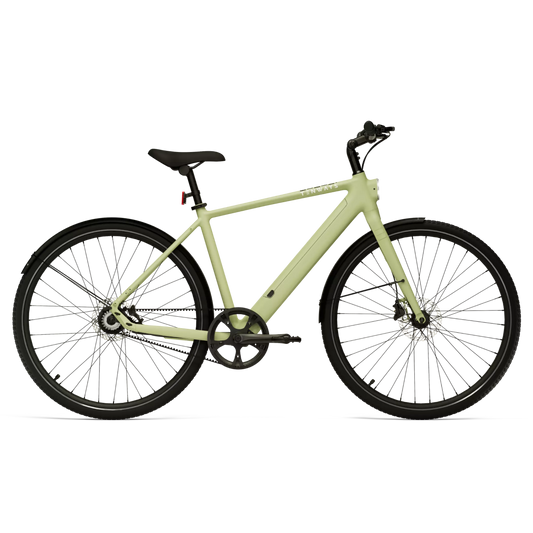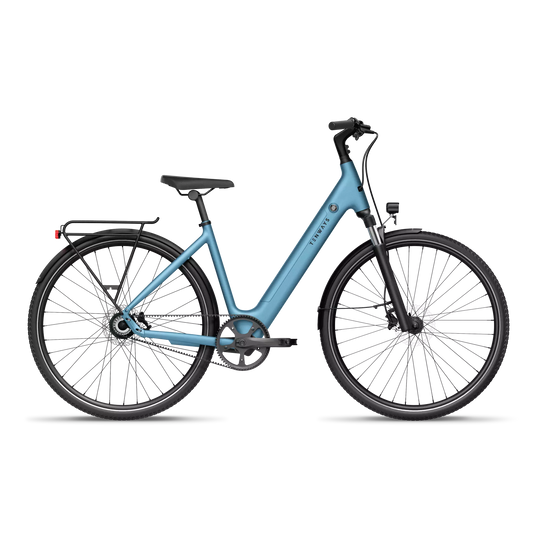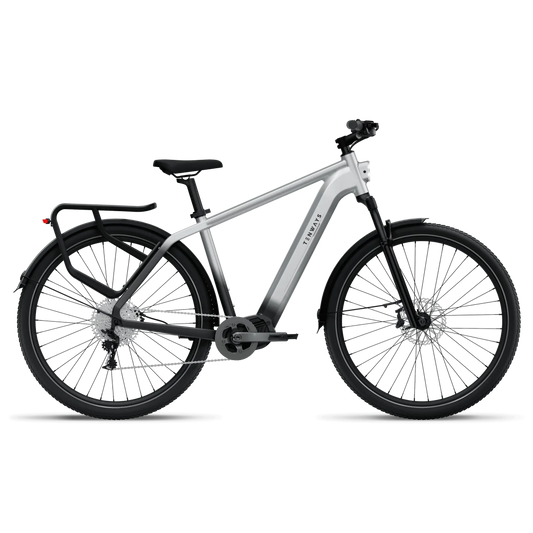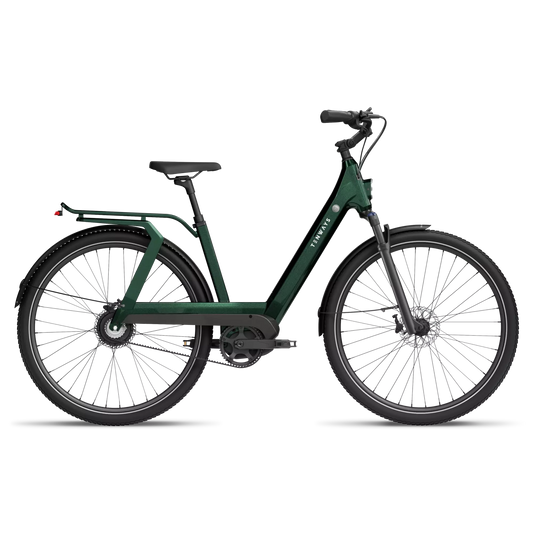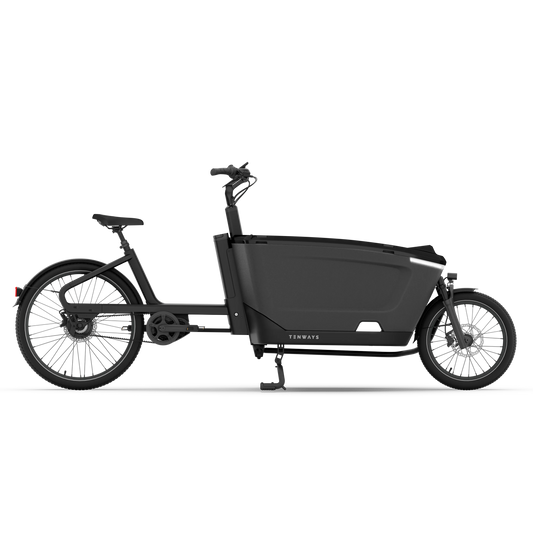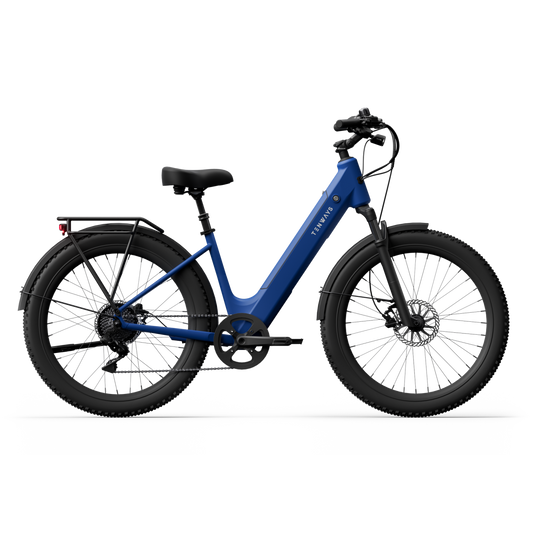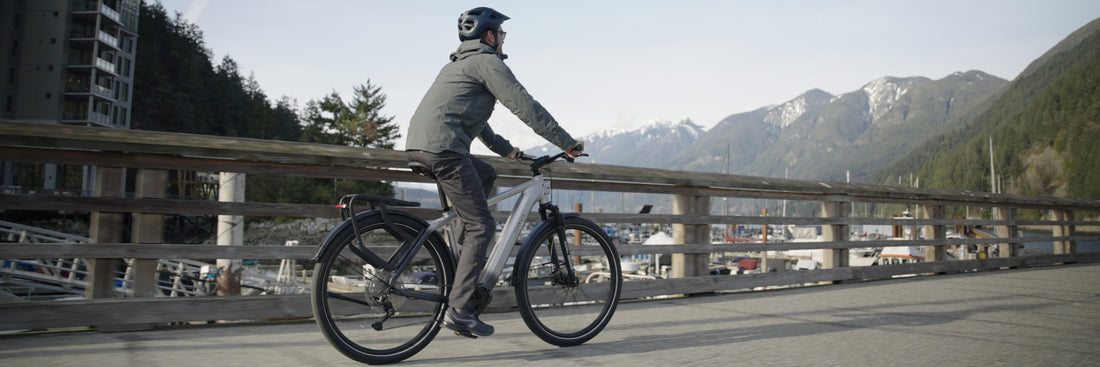A common area of concern for e-bikers is whether they are dressed appropriately for e-biking, to protect themselves as much as possible from any hazards. Wearing suitable clothing is something you can be fully in control of; not only does it help keep your body safe, but your mind too, allowing you to feel more alert and reassured on your rides. For whatever type of cycling you do, the most important gear needs to provide crucial protection if a fall or collision were to occur. Bear in mind you may need more protective clothing depending on your cycling purpose; we'll dig deeper into all this in our blog, to help you feel as confident as possible with your cycling wardrobe on the road!
Dress according to local laws
First and foremost, always check the local cycling laws in your area. In some places, you may legally have to wear specific clothing while riding an e-bike, such as a helmet. These rules would have been evaluated by governing bodies, so it's important to pay attention to this.

The importance of wearing a helmet
We strongly advise always wearing a helmet out on your rides – a crucial safety accessory that helps to protect your brain, by cushioning it from force if any potential incident was to occur. Therefore it's important to invest in a decent one which could potentially save your life. In terms of safety classifications, all helmet products have to pass industry-standardized tests before going to market. For e-biking, with its higher speeds compared to traditional cycling, some helmet manufacturers have introduced specific models; if you want to find a helmet that has been designed with e-biking in mind, look out for ones which meet the Dutch NTA 8776 certification, or incorporate MIPS (multi-directional impact protection system) technology.
How to select a helmet for your lifestyle
To help you choose from the wide variety of helmets available, think about the area where you're riding (climate/terrain), what e-bike you're using (the speedier the bike, the more protection you'll need), and your riding purpose (commuting/leisure). As well as helmets specially designed for e-bike riders, off-road and urban helmets could also be suitable depending on terrain and how long you plan on being on your ride.
There are also helmets available with unique practical features such as cooling ventilation, brims to protect your face from the sun, and scratch-resistant outer layers that protect it if packed away in your bag. Some helmets can also help maximize your visibility outdoors, with features such as in-built lights and brighter colors that will help you be more visible on the roads.

Wardrobe essentials for daily commuting
Let's talk about dressing for general commuting, those times when you're not pushing your endurance for a workout. Of course, this advice also applies if you're just out for a leisurely cruise around the city.
As well as a helmet, high-visibility, reflective clothing is important to make sure you're easily visible at all times, especially during low visibility conditions on dark, gloomy days, so drivers and pedestrians cannot miss you! A high-vis vest or jacket is ideal, and you can also consider high-vis cycling trousers, backpacks, gloves, helmet covers and panniers to highlight your presence further. Appropriate footwear and gloves to provide a secure grip on pedals and handlebar is also recommended; we'll uncover more about that later in this blog.
In terms of fabric, the best choice is lightweight and breathable, with long sleeves to keep you comfortable and covered in variable weather conditions and protected against windchill and sun. We also advise riders to always have a waterproof cycling jacket and trousers handy whatever the season.
Faster riding needs more protective clothing
Whatever the purpose of your trip – commuting or leisure – dressing appropriately also depends on how fast you plan to ride. Generally, the faster your speed, the greater protection you need, as the speed would impact the force on your body more in the event of an incident, therefore increasing the chance of injury. If you are planning on a super-fast ride, or want a more vigorous workout, then read on for advice on what kit to wear to give you extra protection.

Gear for a more intensive e-bike workout
If you're looking to push your endurance with less power assistance during your ride, then extra padding for your body will be needed for intense pedaling. Wearing padded clothes can protect from impact, and decrease the severity of injuries. Don't forget about decent hand gear; not only is it great for a secure grip, but can also protect your hand from cuts and abrasions if you were to fall.
Specialized clothing for longer rides
Long rides can take a toll on your riding comfort levels, but a selection of padded clothing can help you stay relaxed in the saddle. Padded gloves help you avoid getting blisters from the handlebars and can protect against vibration and discomfort. Padded shorts are widely known to protect against chafing, while knee and elbow pads and full-body protective clothing are also available for those opting for highly intense riding. Protective glasses are a good option for long rides out in the countryside, to prevent any dirt, debris or bugs from flying into your eyes and affecting your vision.

Staying cool on your workout
Select special cycling-friendly clothing that wicks moisture, drawing sweat away from your body, keeping you dry and comfortable throughout your ride. Lightweight, breathable tops are great at keeping you from overheating by allowing air circulation while keeping you comfortable in different weather conditions.
Foot and ankle protection
Choosing the right footwear is very important for e-bike control and manoeuvrability. Select closed-toe shoes with sturdy soles for decent support and traction to help you keep better control of your e-bike and lessen the chance of risking foot-related injuries. Loose-fitted or open-toed footwear is dangerous, as it could get caught in the pedals or affect your balance. During e-biking there may be times that your foot accidentally slips from the pedal while pushing for extra speed, causing cuts and bruises around the ankle, to avoid this ankle braces are a great external support to protect joints and ligaments from injury. Moisture-wicking socks are great for protecting against chafing from friction, and are made of breathable materials to wick away moisture while letting your feet breathe.

E-biking clothing for challenging weather conditions
We've covered general cycling attire, but your local climate is another thing you need to consider. Aside from a weatherproof jacket, other rainproof clothing tips include durable waterproof footwear or shoe covers for avoiding any slippy accidents. For colder weather make sure to be dressed warmly, not forgetting the extra windchill you may encounter. Long trousers will not only make you warmer, but also keep you covered from debris on the road. Helmet covers and layered Merino clothing are great for keeping you snug during the chill, to keep your blood circulation pumping for your best performance and alertness on trips.
Conclusion:
We hope this blog has been useful for you in choosing the best clothing for safe e-biking in your local area, whether it's for commuting, casual or more adventurous riding. Being dressed appropriately can be a significant confidence-booster as you set out on the road.
Need more safe e-biking tips? We've prepared various blogs to help you get the most out of your ride in wet weather, wintry weather, commuting, and a general e-bike safety proofing guide.
